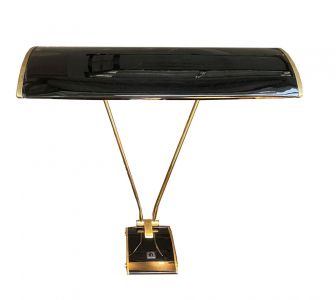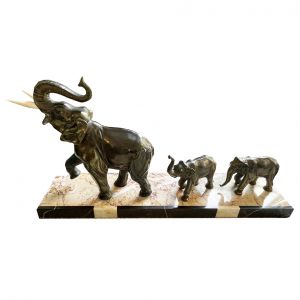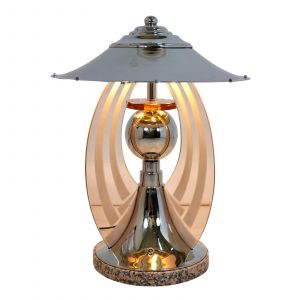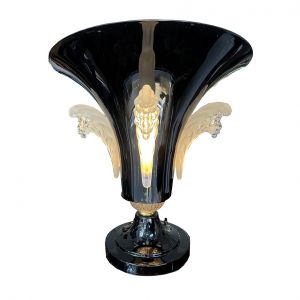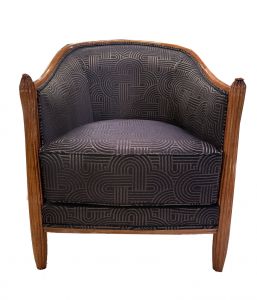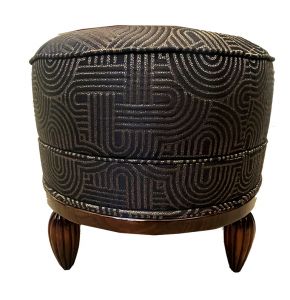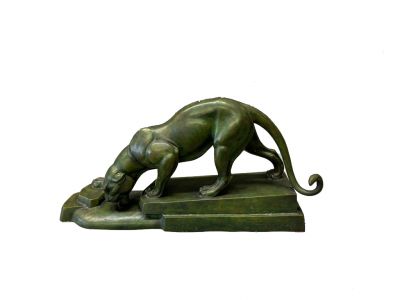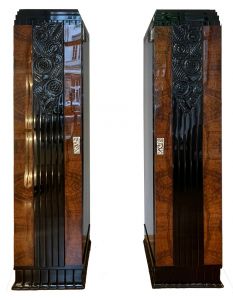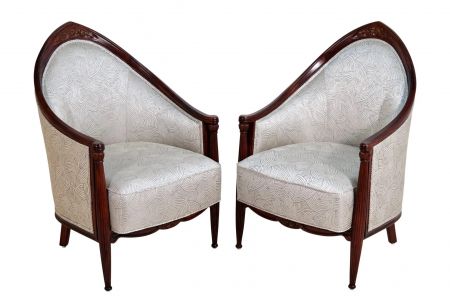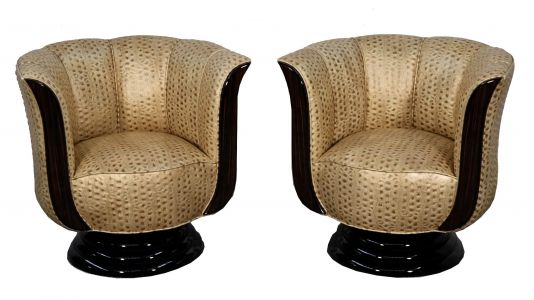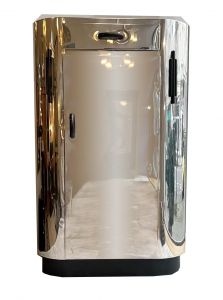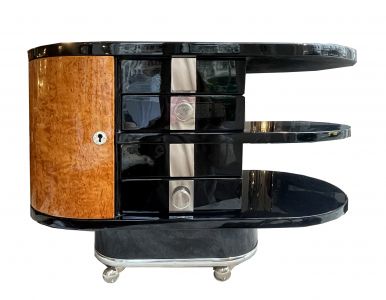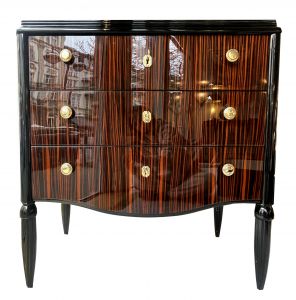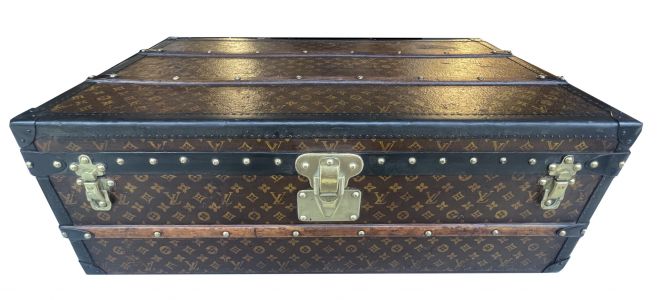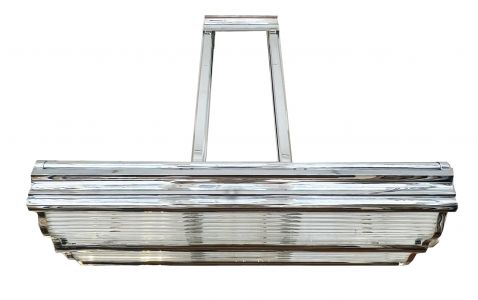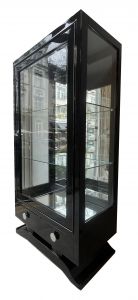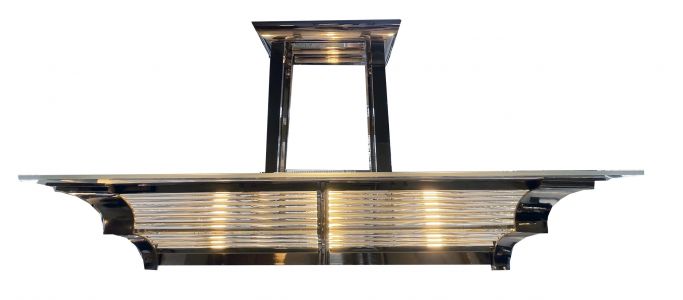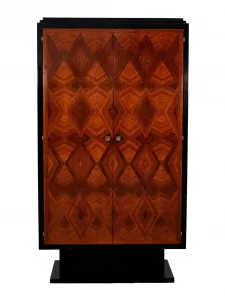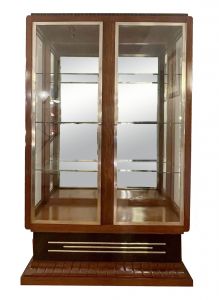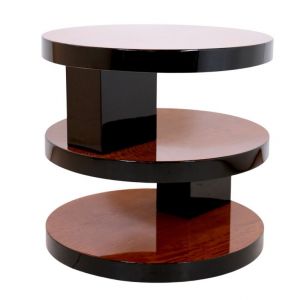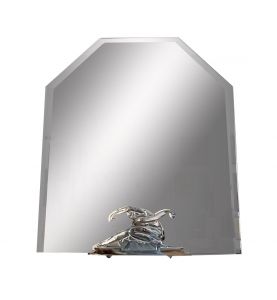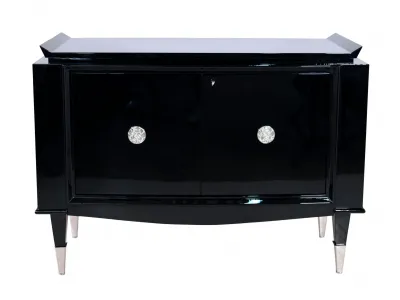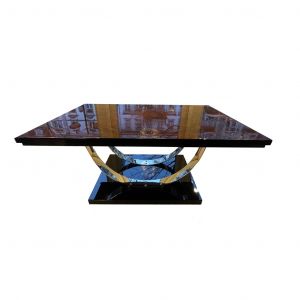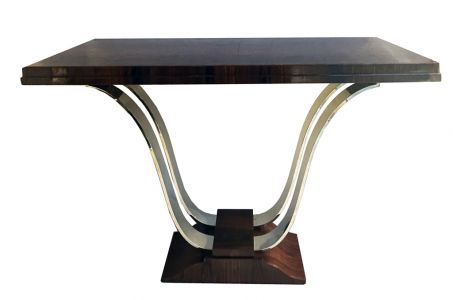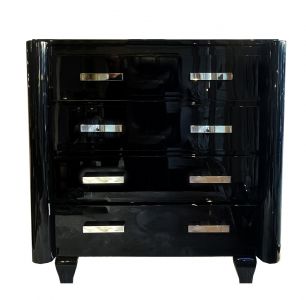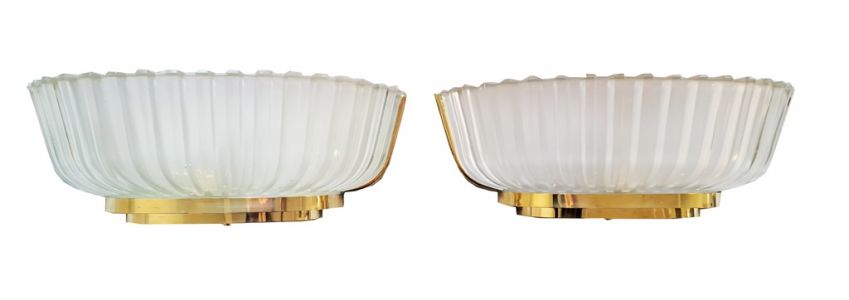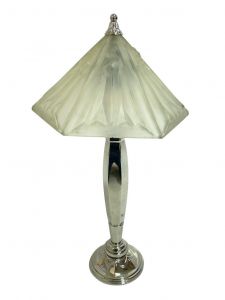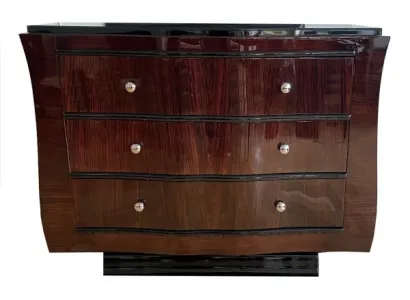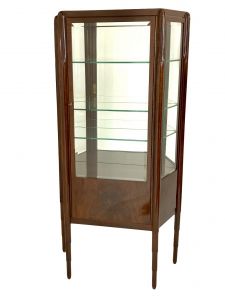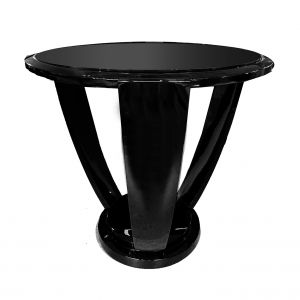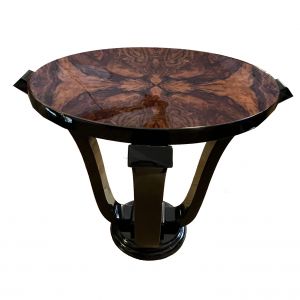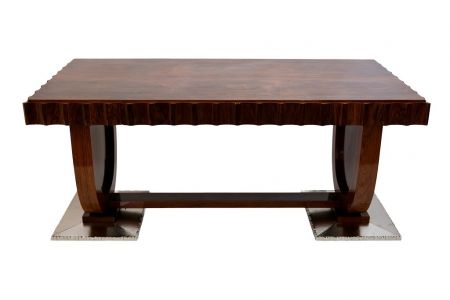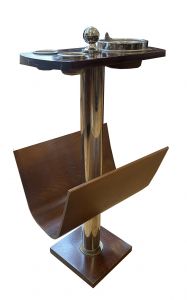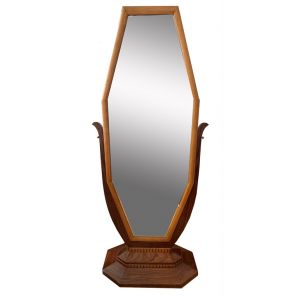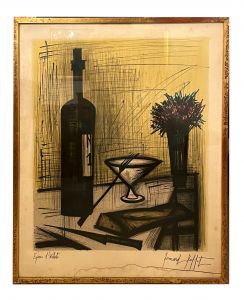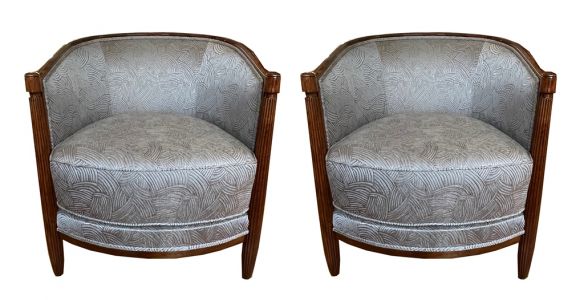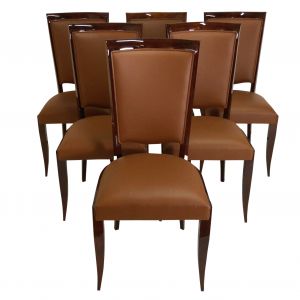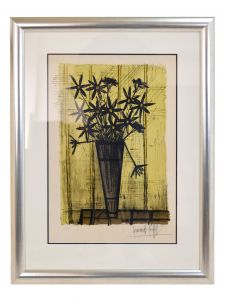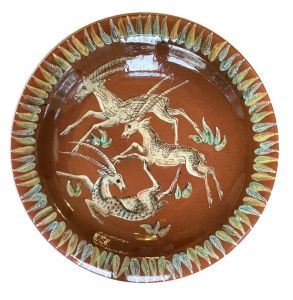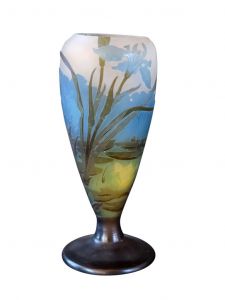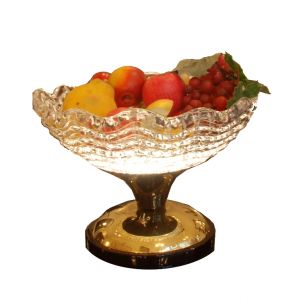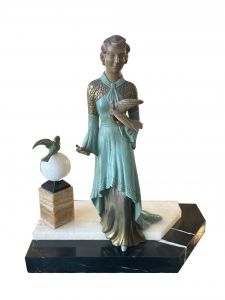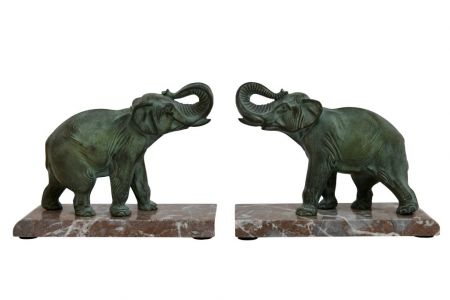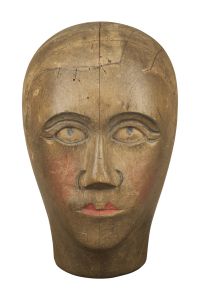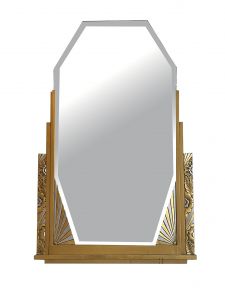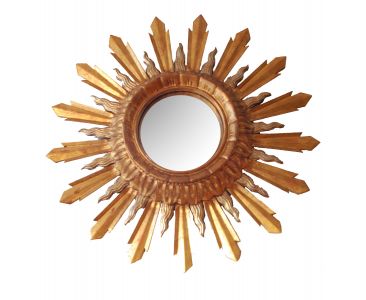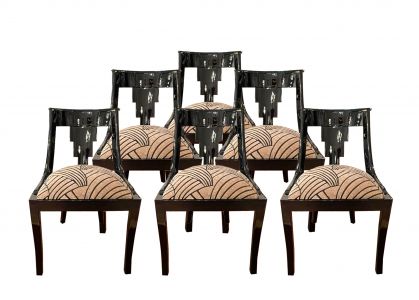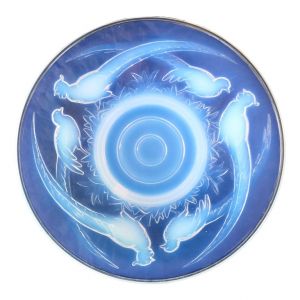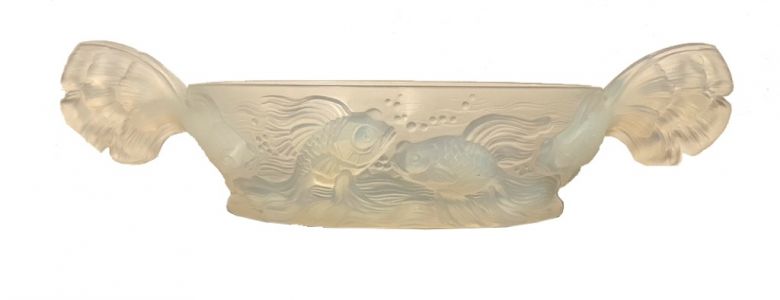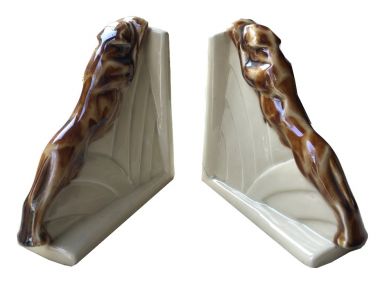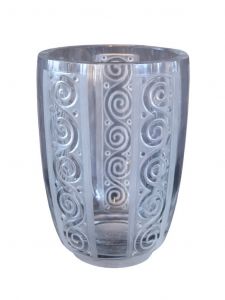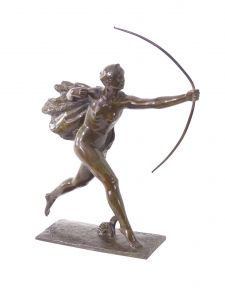- Antiques
- Arrivals
- Art Déco
- Art Nouveau
- Baroque
- Biedermeier
- Design
- Empire and classicism
- Lamps
- Paintings & Art 20th century
- Tables
- Vintage
- Art Déco Designer Glas
- Biedermeier Schrank
- Glossary
You can find a large selection of Art Déco furniture in my shop in Wiesbaden.
Whether you are looking for a large dining table, a display cabinet or comfortable armchairs – we offer high-quality Art Deco furniture and furnishings from around 1930 – complement your home with breathtaking large Art Deco armchairs or lamps – we guarantee their authenticity and quality.
Art Déco Armchairs | Art Déco Desks |Art Déco tables| Art Deco Bar Carts| Art Deco Bar Cabinet |Cabinets | Bronzesandscupltures|cabinets|chests|Glassobjectsandvases|lamps|Mirror|Paintings|Seatings|Secretaries|Tables|Various| Art Déco Showcases | Art Deco Bookends
Art Deco: Noble grace, timeless elegance – exquisite modernity for special living accents.
The art era of Art Deco experienced its heyday in the years between the two world wars, i.e. in the 1920s to 1930s. It was a reaction to the dominant Art Nouveau style of the late 19th and early 20th centuries and developed in response to the social, political and cultural changes of the period.
During the First World War, Europe was marked by destruction and loss and after the end of the war, many people longed for a return to normality and an expression of optimism and a sense of optimism. The Art Deco movement offered exactly that, creating a new aesthetic focused on innovation, progress and luxury.
The name “Art Déco” goes back to the Paris exhibition “Exposition Internationale des Arts Décoratifs et Industriels Modernes” in 1925, where the style was first introduced to a broad public. The exhibition featured a variety of design objects, including furniture, jewelry, fashion, art and architecture, that embodied the character of Art Deco.
The Art Deco style was characterized by a combination of influences including Cubist and Futurist art movements, Egyptian and Aztec motifs, machine aesthetics, and Oriental and African art. The result is a unique mix of clean lines, geometric shapes, symmetrical patterns and fine materials.
In architecture, the Art Deco style found expression in striking buildings with shimmering facades, sharp contours and ornamental decorations. Famous examples of this are the Chrysler Building in New York and the Palais de Chaillot in Paris.
The Art Deco style was also reflected in paintings, sculptures and graphics. Artists such as Tamara de Lempicka and Erté created works with elegant figures, stylized shapes and bright colors.
The period between the world wars was marked by social changes, particularly in relation to the role of women, who became increasingly independent and self-confident. The Art Deco style reflected these changes and showed this in its modern and glamorous aesthetic.
Art Deco was undoubtedly a style associated with elegance and luxury and was particularly popular in wealthy circles. In the 1920s and 1930s, France, particularly Paris, became the center of the Art Deco style, and it was primarily the wealthy elite who were attracted to the style.
However, Art Deco was not only worn by the rich and intellectuals. Although some of Art Deco’s most opulent and elaborate designs were certainly intended for a wealthier clientele, the style was also present in many other areas of life.
The Art Deco movement influenced architecture, product design, fashion, graphic design and art in general. Numerous Art Deco elements were used in a wide range of objects and products, from furniture to jewelry. The style was not only reserved for the wealthy, but was also found in lighter and more accessible forms that were affordable to a wider audience.
Furthermore, the Art Deco movement was not limited to France. It gained international recognition and influenced design and art in many parts of the world. The Art Deco style was particularly popular in the USA and other European countries such as Great Britain, Germany and Italy.
It is important to note that the Art Deco style was not exclusively associated with elite or intellectual circles. Although some of the most representative examples of the style were certainly created for a wealthy audience, there was also a wide range of Art Deco objects and designs that were accessible to different social classes.
As a modern classic at the beginning of the 20th century, the furniture and furnishings of this style, which emerged from the “Art Décoratif” art movement, still impress today with their spectacular material and form aesthetics.
The term “Art Deco” refers to a significant art style that was particularly popular in the 1920s and 1930s. This style, which influenced a wide range of art forms and design areas, has significant art historical significance in the art trade.
Art Deco emerged in a time of upheaval after the First World War and during the economic boom of the interwar period. The style is characterized by its emphasis on elegance, luxury, geometry and ornamentation. Typical features include clean lines, geometric shapes, rich decorations, exotic influences and the use of high-quality materials such as precious metals, exotic woods and gemstones.
Art Deco is immensely important in the art trade for several reasons:
Collector’s interest: Art Deco was and is very popular with collectors. Artworks and design objects in the Art Deco style, be it furniture, jewelry, paintings, sculptures or ceramics, are often valuable collector’s items. Therefore they have a high market value in the art trade.
Design History: Art Deco marked a transition from the organic forms of Art Nouveau to a modern, geometric approach to design. This style influenced many aspects of design, from architecture to fashion to household items. Therefore, Art Deco is of great importance to design history and is often presented in museums and exhibitions.
Influence on popular culture: Many elements of the Art Deco style have found their way into popular culture and continue to inspire modern designs. This contributes to the timeless relevance of the style and makes Art Deco an interesting topic in the art trade.
Exclusivity and craftsmanship: Art Deco works of art are often characterized by high craftsmanship and attention to detail. Manufacturing often required specialized skills that may be rarer today. This gives the objects a special value and makes them attractive for lovers of handicrafts.
Auctions and collector markets: High-quality Art Deco pieces often fetch high prices at auctions. Art Deco collectors’ markets exist all over the world, and auction houses such as Christie’s and Sotheby’s regularly sell important Art Deco works of art.
In summary, the art historical significance of the term “Art Deco” in the art trade is that it represents an important and influential style that is of great relevance both culturally and economically. The fascination with Art Deco continues to this day and its presence in the art trade reflects the continued appreciation for the style.
Art Deco was a versatile art style that influenced many different areas of design and art. Here are some examples of Art Deco artwork in the categories you mentioned:
Furniture: Art Deco furniture is often characterized by clean lines, geometric shapes and the use of high-quality materials. Typical features include inlaid wood, symmetrical designs and often chrome-decorated elements. Armchairs, tables, chests of drawers and cupboards in the Art Deco style are sought after by collectors and enthusiasts.
Mirrors: Art Deco mirrors are often large and impressively designed. They can feature clear geometric shapes, abstract patterns or stylized animal and plant motifs. The frames can be made of wood, metal or other materials and are often ornately decorated.
Paintings: In painting, the Art Deco style is often manifested through flat, simplified shapes, clean lines and vibrant colors. Both abstract and figurative paintings can be designed in the Art Deco style. Subjects can include stylized portraits, cityscapes, still lifes, and more.
Bronzes: Sculptures and works of art made of bronze in the Art Deco style are characterized by their elegant appearance and their modern interpretation of traditional motifs. They are often abstract and geometric in nature, with human figures, animals and abstract shapes often appearing.
Glass art: In the field of glass art, Art Deco can be expressed in the form of vases, bowls, lamps and other decorative objects. The shapes are often angular and geometric, with clear and colored glass elements. Renowned glass artists such as René Lalique have significantly influenced this area of Art Deco.
In all of these categories, Art Deco artworks stand out for their distinctive style and aesthetics. They embody the elegance, glamor and sense of progress of the time in which the Art Deco style flourished. Today, these works are not only art objects, but also sought-after collector’s items and valuable cultural assets.
As a modern classic at the beginning of the 20th century, the furniture and furnishings of this style, which emerged from the “Art Décoratif” art movement, still impress today with their spectacular material and form aesthetics.
The collection areas, especially when it comes to table culture, are experiencing a real boom – knife rests in various designs are still a very sought-after and popular table decoration.

-
RSA Antiquitäten Wiesbaden
-
Taunusstraße 34
65183 Wiesbaden -
+49 611 5 29 05 70
-
+49 170 7 83 01 13
-
info@antiquitaeten-wiesbaden.de
-
Mondayclosed
-
Tuesday - Friday12 a.m. - 6 p.m.
-
Saturday10 a.m. - 4 p.m.
